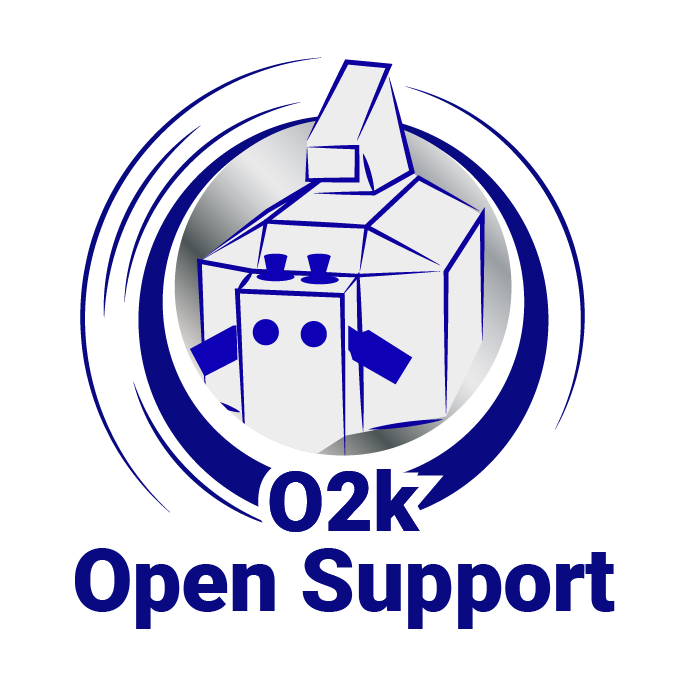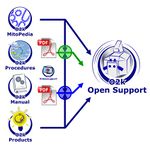|
|
| Line 8: |
Line 8: |
| {{MiPNet pdf page linking to MitoPedia}} | | {{MiPNet pdf page linking to MitoPedia}} |
| |mipnetlab=AT_Innsbruck_Oroboros | | |mipnetlab=AT_Innsbruck_Oroboros |
| }}
| |
| {{Labeling
| |
| |area=Instruments;methods
| |
| |instruments=Oxygraph-2k, O2k-Protocol
| |
| |additional=O2k-SOP
| |
| }} | | }} |
| <br /> | | <br /> |
| [[File:Expand.png|right|45px |Click to expand or collaps]] | | [[File:Expand.png|right|45px |Click to expand or collaps]] |
| <div class="toccolours mw-collapsible mw-collapsed"> | | <div class="toccolours mw-collapsible mw-expanded"> |
| :::[[File:Questions.jpg|left|24px |Explanation of terms]] '''» Keywords''' | | :::[[File:Questions.jpg|left|24px |Explanation of terms]] '''» Keywords''' |
| <div class="mw-collapsible-content"> | | <div class="mw-collapsible-content"> |
| Line 32: |
Line 27: |
| ::::» [[Concentration]] | | ::::» [[Concentration]] |
| ::::» [[High-resolution respirometry]] | | ::::» [[High-resolution respirometry]] |
| | ::::» [[DL-Protocols#Instrumental_O2_DLP |DL-Protocols]] |
| ::::» [[MiPNet06.03 POS-calibration-SOP |O2k-Protocols SOP: POS-calibration]] | | ::::» [[MiPNet06.03 POS-calibration-SOP |O2k-Protocols SOP: POS-calibration]] |
| ::::» [[MitoFit Quality Control System]] | | ::::» [[MitoFit Quality Control System]] |
| Line 37: |
Line 33: |
| ::::» [[Oxygen |Oxygen, dioxygen, O<sub>2</sub>]] | | ::::» [[Oxygen |Oxygen, dioxygen, O<sub>2</sub>]] |
| ::::» [[Oxygen sensor test]] | | ::::» [[Oxygen sensor test]] |
| | ::::» [[Oxygen solubility factor]] |
| ::::» [[Zero calibration]] | | ::::» [[Zero calibration]] |
| </div> | | </div> |
| </div> | | </div> |
| <br />
| | {{Labeling |
| __TOC__
| | |area=Instruments;methods |
| | | |instruments=Oxygraph-2k, O2k-Protocol |
| {{Technical support integrated}} | | |additional=O2k-SOP |
| <br>
| | }} |
| | |
| == Standard operating procedure ==
| |
| | |
| ::::The O2 sensor test does not only serve to evaluate the function of the OroboPOS, but many other components of the O2k have to function according to specifications for a high-resolution oxygen signal to be obtained:
| |
| ::::# [[USB-Cable 2.0\Type A-B]] not properly connected to the O2k and PC or Laptop.
| |
| ::::# [[O2k-Chamber]] not properly positioned, such that O2 sensors are not connected to the medium.
| |
| ::::# [[OroboPOS-Membranes]] defective or not properly applied.
| |
| ::::# [[OroboPOS-Connector]] contaminated gold contacts; plugs not properly connected to the sockets of the [[O2k-Main Unit]].
| |
| ::::# OroboPOS contacts not cleaned. In rare cases, [[Pen-Contact Oil]] might be used.
| |
| ::::# [[OroboPOS-Electrolyte Powder]] contaminated, inappropriate water used for dissolving the powder.
| |
| ::::# [[O2-Zero Powder]] not properly handled; confused with [[OroboPOS-Polishing Powder]].
| |
| ::::# [[OroboPOS]] not properly serviced; not properly mounted to the [[OroboPOS-Connector]]; or defective POS head.
| |
| ::::# Room temperature not sufficiently stable.
| |
| ::::# [[Stirrer-Bar\white PVDF\15x6 mm]] not added to the chamber, or stuck and not rotating.
| |
| ::::# [[O2k-Barometric Pressure Transducer]] not properly calibrated.
| |
| ::::# [[O2k-Peltier Temperature Control]] defective electronics.
| |
| ::::# [[O2k-Electromagnetic Stirrer Twin-Control]] defective electronics.
| |
| ::::# [[O2k-Main Basic]] not properly connected; other defective hardware.
| |
| | |
| == Trouble shooting ==
| |
| :::'''If the signal remains off scale''' (9.99 V) or very low (< 1 V) at air saturation (25 to 37 °C; lower signals at lower temperatures): Many components may be responsible, and an electronic defect of the [[O2k-Main Unit]] must be carefully excluded.
| |
| ::::# Check settings for [[Gain]] (use Gain 1) and [[Polarization voltage]] (use 800 mV). If these settings were incorrect, the off-scale problem may be solved simply by using the standard settings.
| |
| ::::# Empty the chamber with the O2k running and connected to DatLab. Switch the stirrer off. Remove the [[OroboPOS-Connector]] with the attached [[OroboPOS]]. Leave the sensor attached to the POS connector, and the POS connector plugged into the O2k-Main Unit. Record the signal for some minutes. The raw signal should normalize to a value >1 V and <3 V (Gain 1). If so, the O2k-Chamber assembly was problematic (application problem), and re-assembly will solve the problem. » [https://www.youtube.com/watch?v=1JffCpapX6A O2k-Videosupport: Insert O2k-Chamber].
| |
| ::::# Remove the sensor head from the sensor connector, which remains plugged into the O2k-Main Unit. If the raw signal is not stable at 0 V, a defect of the [[OroboPOS-Connector]] is indicated.
| |
| ::::# Remove the plug of the [[OroboPOS-Connector]] from the [[O2k-Main Unit]]. A signal of 0.4 V, which remains stable when changing the gain, is a strong indication of an electronic problem in the O2k-Main Unit.
| |
| ::::## For O2k-Series D and higher: The signal should be 0 V, otherwise an electronic problem of the O2k-Main Unit is indicated.
| |
| ::::## For O2k-Series A to C: The signal should be off-scale (+/- 9.99 V), otherwise an electronic problem of the O2k-Main Unit is indicated.
| |
| | |
| :::'''If specifications given in the [[MiPNet06.03 POS-calibration-SOP |POS-SOP]] are not obtained''': switch components for locating the problem.
| |
| ::::# Switch the [[OroboPOS]] between O2k-Chambers A and B. This is a good opportunity to clean the gold contacts and apply [[Contact oil]] to the gold pin and thread connecting the [[POS connector]]s and sensors. It is not necessary to remove the seal tip and the mounted membrane from the OroboPOS. When disconnecting a sensor from the POS connector, prevent damage by electrostatic discharge by following the guidelines: [[MiPNet14.01 ESD-damage]].
| |
| ::::# Repeat the O2 sensor test. If the problem moved together with the sensor from one side to the other, the problem is located in the [[OroboPOS]] sensor.
| |
| ::::# If the problem remained on the same side, switch the [[POS connector]] together with the attached sensors between right and left side (A and B).
| |
| ::::# Repeat the O2 sensor test. If the problem moved together with the POS connector, it is located at the [[OroboPOS-Connector]].
| |
| | |
| == Oxygen solubility factor ==
| |
| [[Image:MiPNet06.03_Table.jpg|centre|frame|<sup>c</sup>O2* is the oxygen concentration at thermodynamic equilibrium with air under standard conditions of 100 kPa barometric pressure. ''F''<sub>M</sub> has been determined for MiR05 at 30 °C and 37 °C, and is assumed to be identical at 25 °C.]]
| |
| | |
| == Instrumental O2 DLP ==
| |
| | |
| Instrumental [[DL-Protocols]] (DLP) are used for calibrations and instrumental quality control, typically without experimental sample in the incubation medium.
| |
| | |
| {| class="wikitable" border="1"
| |
| |-
| |
| ! DL-Protocol
| |
| ! Description
| |
| ! DLP File
| |
| | |
| |-
| |
| | O2 calibration air
| |
| | O2 sensor test and calibration at air saturation. | |
| | [[Media:O2-calibration_air.DLP|O2 calibration air.DLP]]
| |
| | |
| | |
| |-
| |
| | O2 calibration air and zero
| |
| | O2 sensor test and calibration at air saturation and zero oxygen.
| |
| | [[Media:O2 calibration air and zero.DLP|O2 calibration air and zero.DLP]]
| |
| |}
| |
| | |
| A full list of DL-Protocols (Instrumental O2 DL-Protocols and SUIT O2 DL-Protocols) is displayed in [[DL-Protocols]].
| |
| | |
| == References ==
| |
| ::::* Forstner H, Gnaiger E (1983) Calculation of equilibrium oxygen concentration. In: Polarographic Oxygen Sensors. Aquatic and Physiological Applications. Gnaiger E, Forstner H (eds), Springer, Berlin, Heidelberg, New York:321-33. - [[Forstner_1983_POS |»Bioblast link]]
| |
| ::::* [[Gnaiger 2008 POS]]
| |
| ::::* [[MiPNet19.18D O2k-calibration]]
| |
| | |
| ::: '''This article is cited in'''
| |
| ::::* Rodriguez JV, Pizarro MD, Scandizzi AL, Guibert EE, Almada LL, Mamprin ME (2008) Construction and performance of a minibioreactor suitable as experimental bioartificial liver. Artif Organs 32:323-8. [http://www.ncbi.nlm.nih.gov/pubmed/18370948 »PubMed 18370948]
| |
| | |
| | |
| | |
| [[File:O2k-QCS.jpg|350px|O2k-QCS]] Next step - O2k Quality Control 2: [[MiPNet14.06 Instrumental O2 background]]
| |
| | |
| | |
| [[Category:Technical service]]
| |







